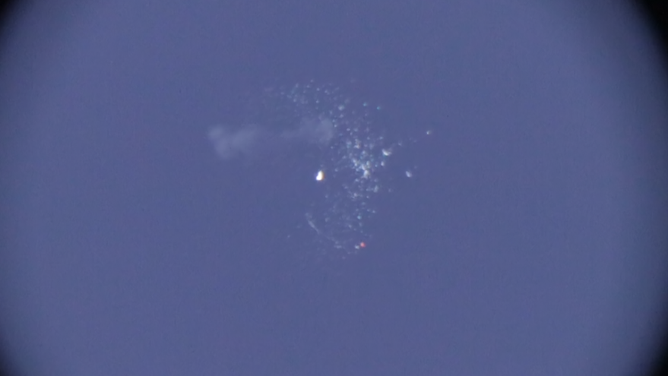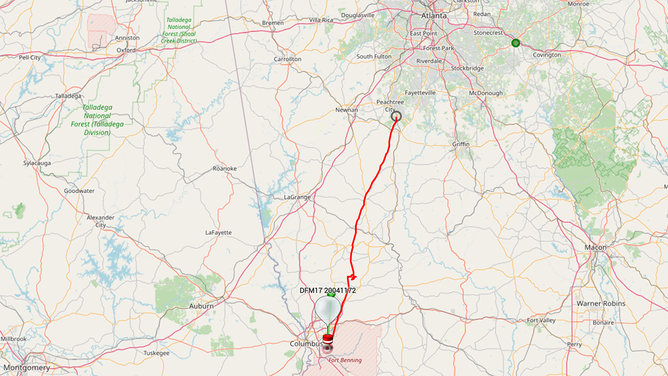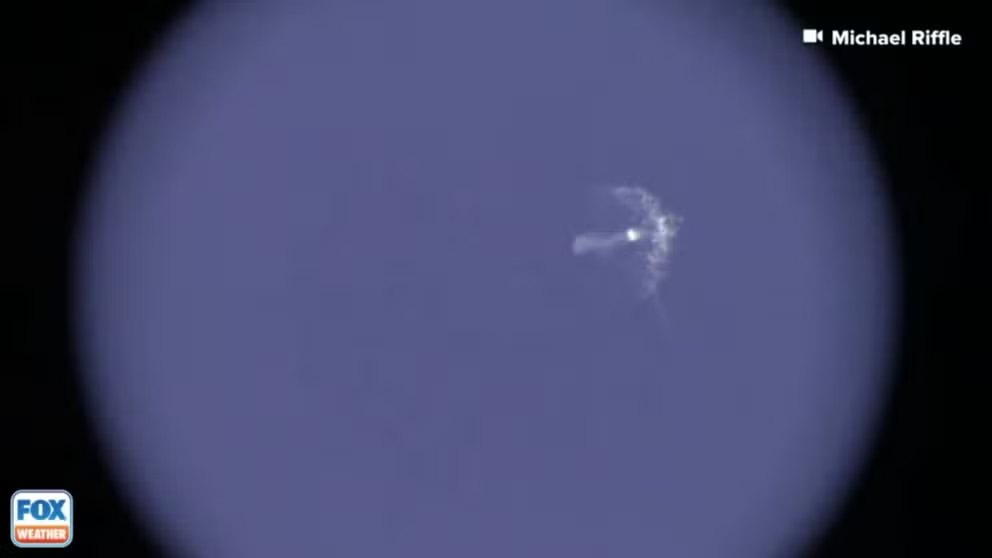A poppin' sight: Watch as weather balloons explode as they soar high into Earth's atmosphere
In total, 92 NWS stations and nearly 900 worldwide stations launch weather balloons twice a day, every day of the year
Georgia man documents weather balloons exploding in air
An amateur astronomer is allowing others to witness a rare sight he’s been tracking in the southern skies of Georgia.
ATLANTA – An amateur astronomer is allowing others to witness a rare sight he’s been tracking in the southern skies of Georgia.
Mike Riffle is a weather observer from Cataula and has been providing information on astronomical and weather events that can be seen from Harris County. One of the more unusual happenings he’s been documenting is the National Weather Service balloons exploding more than 20 miles above Earth as they reach the end of their mission.
HOW TO WATCH FOX WEATHER ON TV
Riffle said he first decided to track the weather balloons because he was interested in launching his own someday, and the NWS balloons allowed him to practice tracking and recovering techniques.
Not your average party balloon
For the NWS, the process starts by filling the balloons with hydrogen or helium, to expand the size of the latex or synthetic rubber balloon to about 4 feet by 4 feet. It’s then sealed and released into the air with an instrument pack called a radiosonde attached. As the balloon soars into the atmosphere, they expand to the size of a two-story house. Eventually, the pressure inside the balloon becomes too great for the balloon, and it pops.
Riffle said people seldom see weather balloons pop, primarily due to the altitude.
NATIONWIDE HELIUM SHORTAGE COULD DEFLATE ACCURACY IN WEATHER FORECASTING
"Typically, the NWS balloons will burst at altitudes between 100,000 feet and 115,000 feet," he said. "During certain times of the year, the balloon will reach burst altitude around sunset. When this occurs, the balloon is visible to the naked eye, appearing like a star. I think most people simply assume that’s what it is."

Mike Riffle is tracking and recovering weather balloons launched by NWS Atlanta in Peachtree City as they explode in Harris County.
(Mike Riffle)
The balloon flights last about 2 hours and can drift as far as 125 miles away.
WEATHER BALLOON GOES ON 117-MILE RIDE OVER LAKE MICHIGAN
"Sometimes the burst is violent enough that only a small portion of the balloon remains intact, but many times a significant portion of the balloon remains attached to a parachute," Riffle said. "As much as one-half to three-quarters (remained) with some of the balloons I have recovered."
What is a radiosonde?
Attached to the end of the balloon at launch is a parachute. The NWS will also connect a radiosonde to read the temperature, humidity, dew points, wind speed, wind direction and more.
These instruments will often endure temperatures as cold as minus 139 degrees, relative humidities from 0% to 100%, air pressures only a few thousandths of what is found on the Earth's surface, ice, rain, thunderstorms and wind speeds of almost 200 mph, according to the NWS.
What is a weather balloon?
What does a weather balloon do exactly? Learn what a weather balloon looks like and how they collect real-time data in the sky on winds, pressure, temperatures and moisture.
The parachute allows the radiosonde fall safely back to the ground at speeds less than 22 mph after the balloon bursts.
"When the balloon pops, everything begins falling until around 60,000 feet when the parachute encounters air thick enough to allow it to inflate and start slowing the descent," Riffle said. "Any portion of the balloon that remains will stream above the parachute during the descent."
If you think you can try to capture the balloons bursting with your smartphone camera, think again. Riffle uses a digital single-lens reflex camera attached to an 8-inch Schmidt-Cassegrain telescope.
ACCURATE FORECASTS WOULD BE ALMOST IMPOSSIBLE WITHOUT WEATHER BALLOONS
"I also use a 3x Barlow lens between the DSLR and the telescope, which gives me a focal length of 6,000 mm, about 7.5 times what you would get with a large telephoto camera lens," he said.
Lost and found
It costs the government about $200 per launch, but the real-time data collected by the radiosonde is translated into your daily and weekly forecast models. Each radiosonde contains a mailing bag and instructions on what to do if you find one. The NWS said about 20% of the 75,000 radiosondes sent up each year in the U.S. are found and returned.
WATCH: METEOROLOGISTS ATTEMPT WEATHER BALLOON LAUNCH IN NEAR 50 MPH GUSTS
Riffle said he tracked a radiosonde in March that descended from 115,980 feet to the ground in just 16 minutes.
"Typically, they take around 30-45 minutes, but I have also seen a few take up to two hours to float down," he said. "I suspect those did not have much of the balloon remaining."

A weather balloon launched at 8:56 p.m. on May 11, 2022, from the NWS Atlanta office in Peachtree City popped 4 miles northwest of Waverly Hall, Georgia It traveled about 60 miles in total.
(Michael Riffle)
He said he searched for that fast descender but could not find it.
"I was really interested to see what the parachute looked like or if there was even one still attached," Riffle said.
In total, 92 NWS stations and nearly 900 worldwide stations launch weather balloons twice a day, every day of the year.
CLICK HERE TO GET THE FOX WEATHER UPDATE PODCAST
Track the temperatures in your area with the FOX Weather app. The free FOX Weather livestream is also available 24/7 on the website and app and on your favorite streaming platform. The FOX Weather Update podcast also provides weather information for the entire country.

